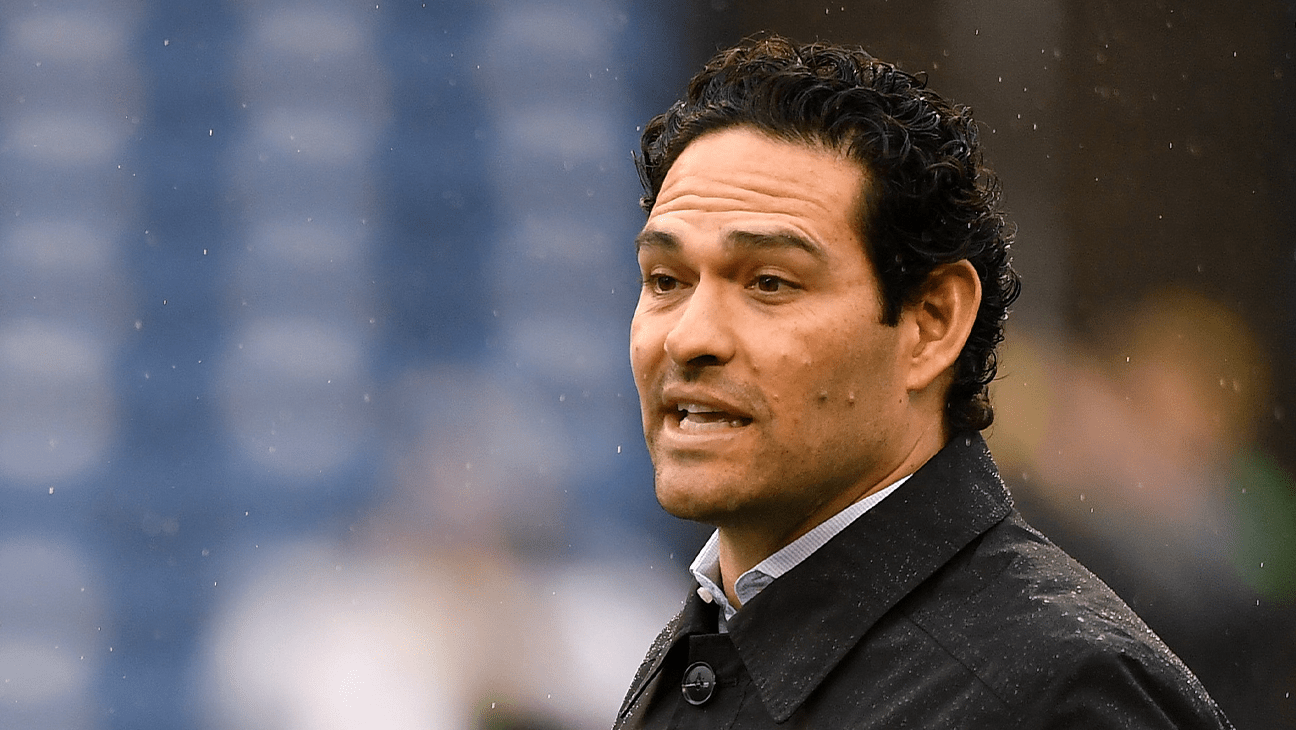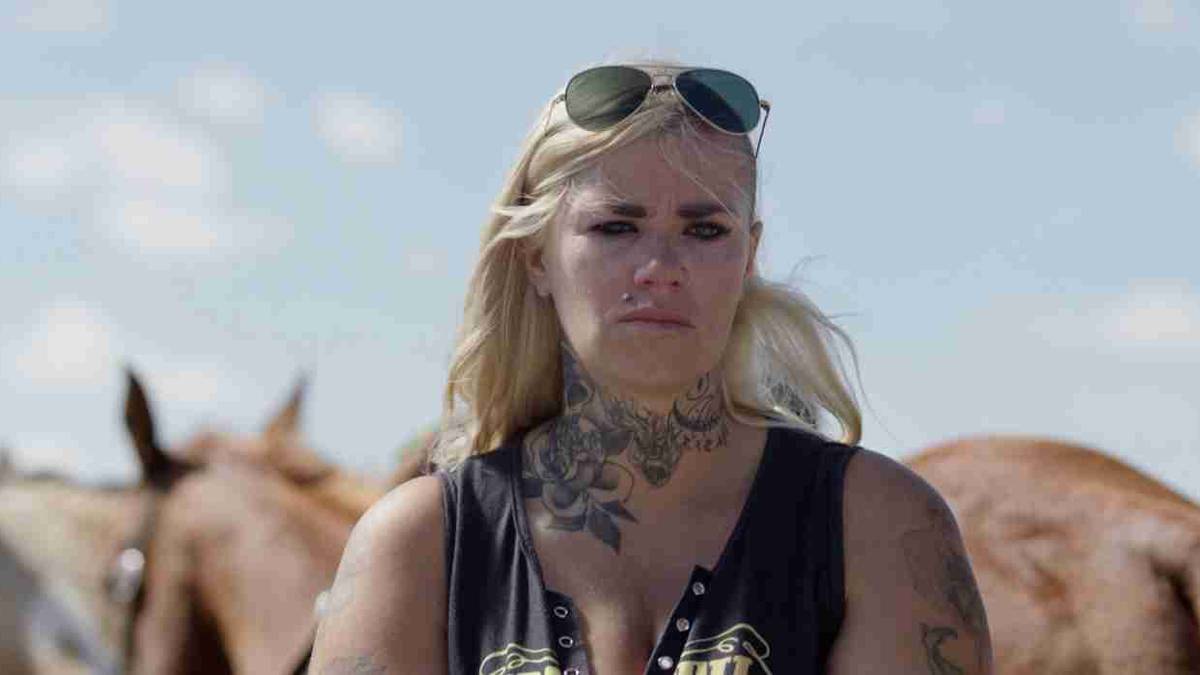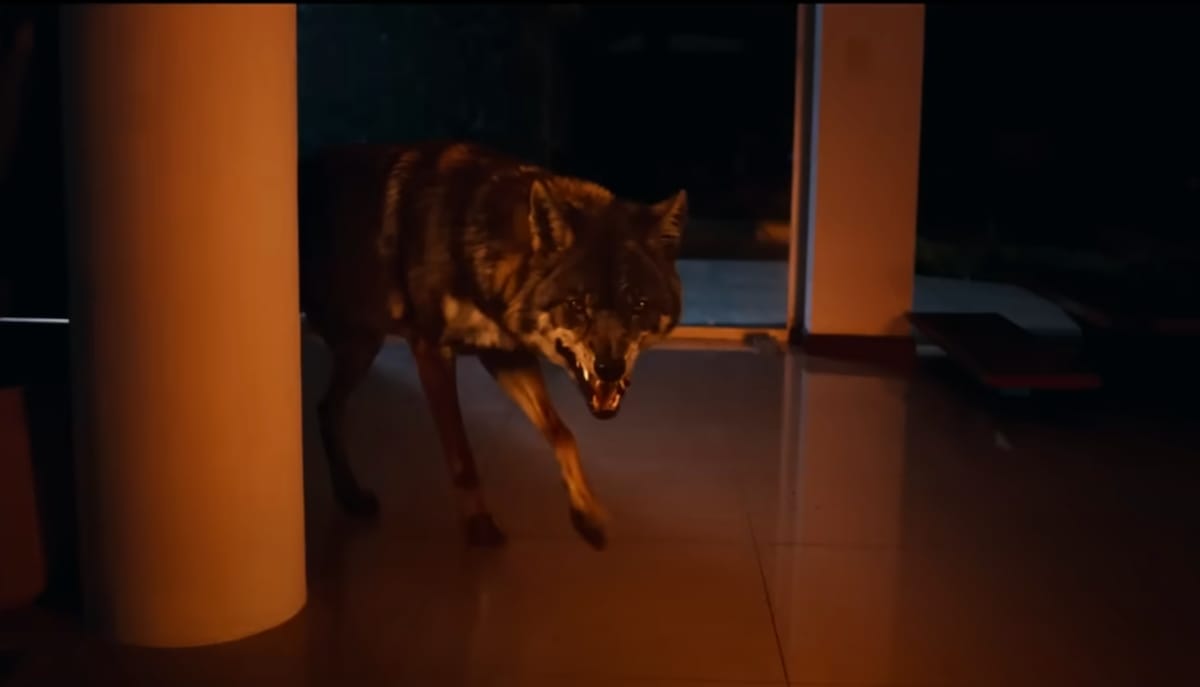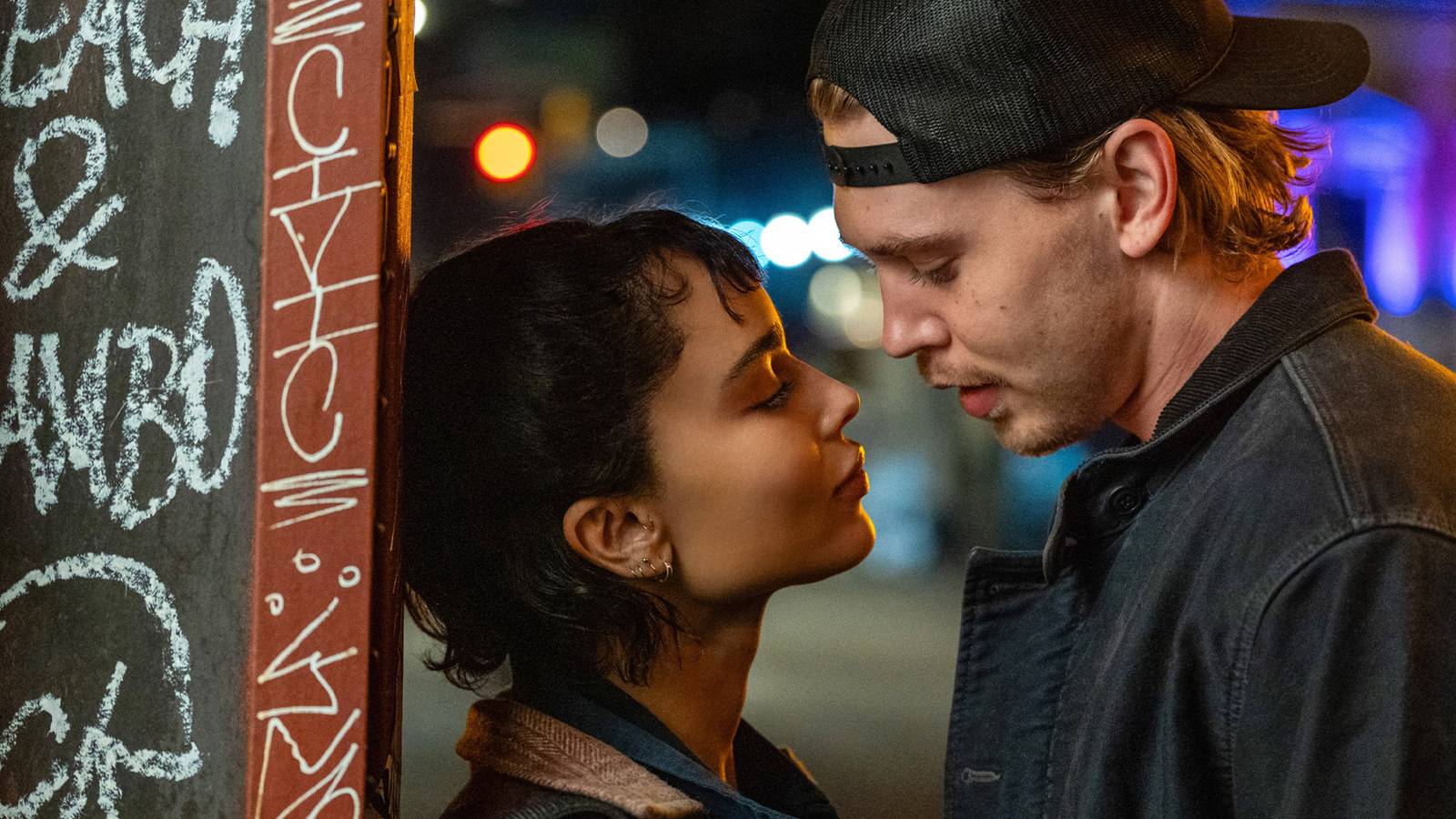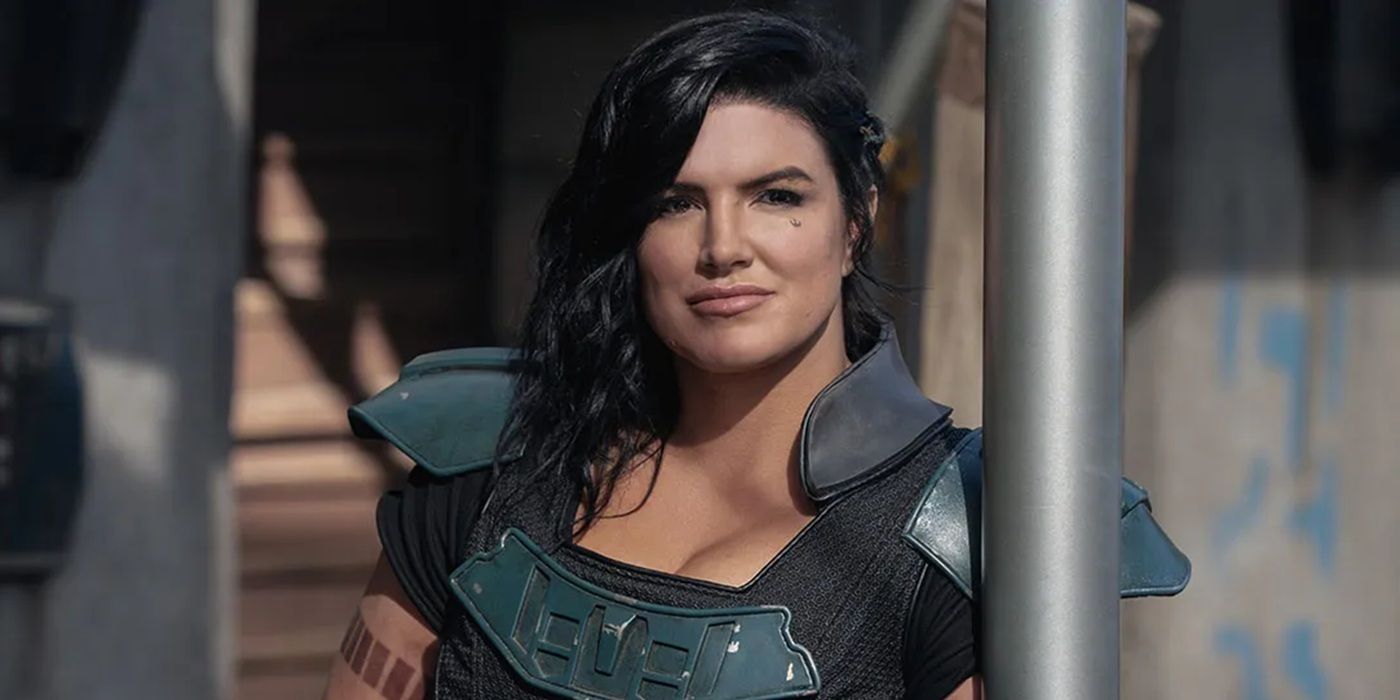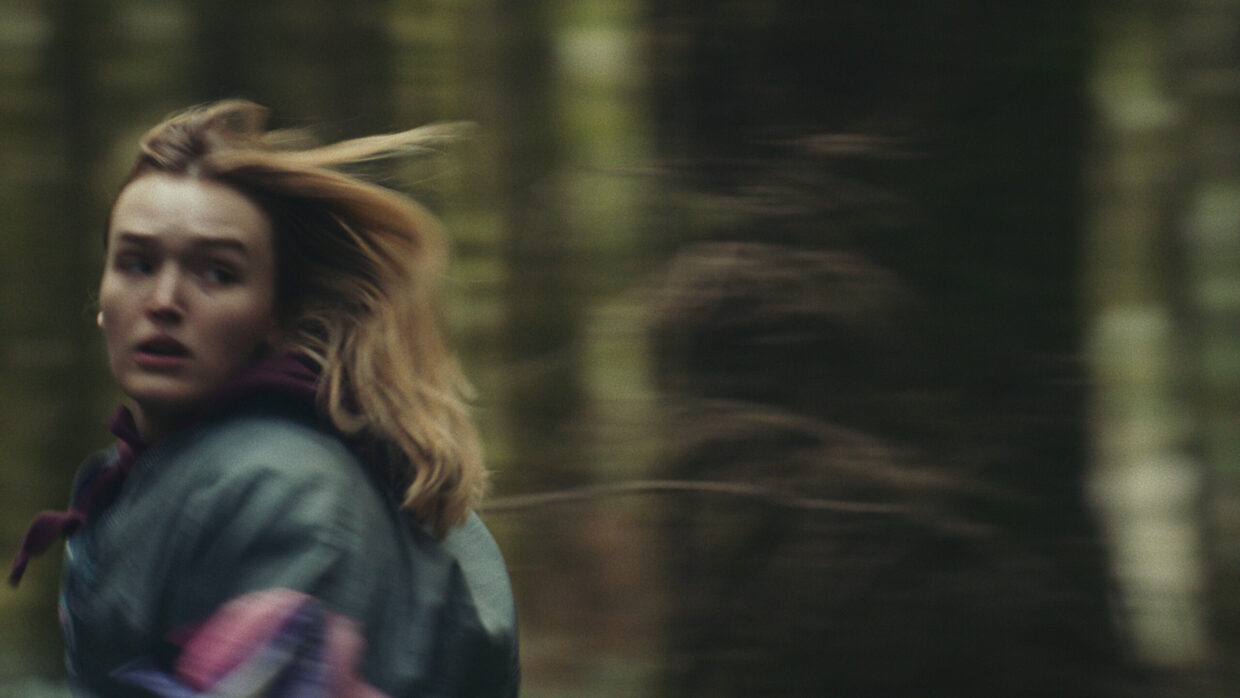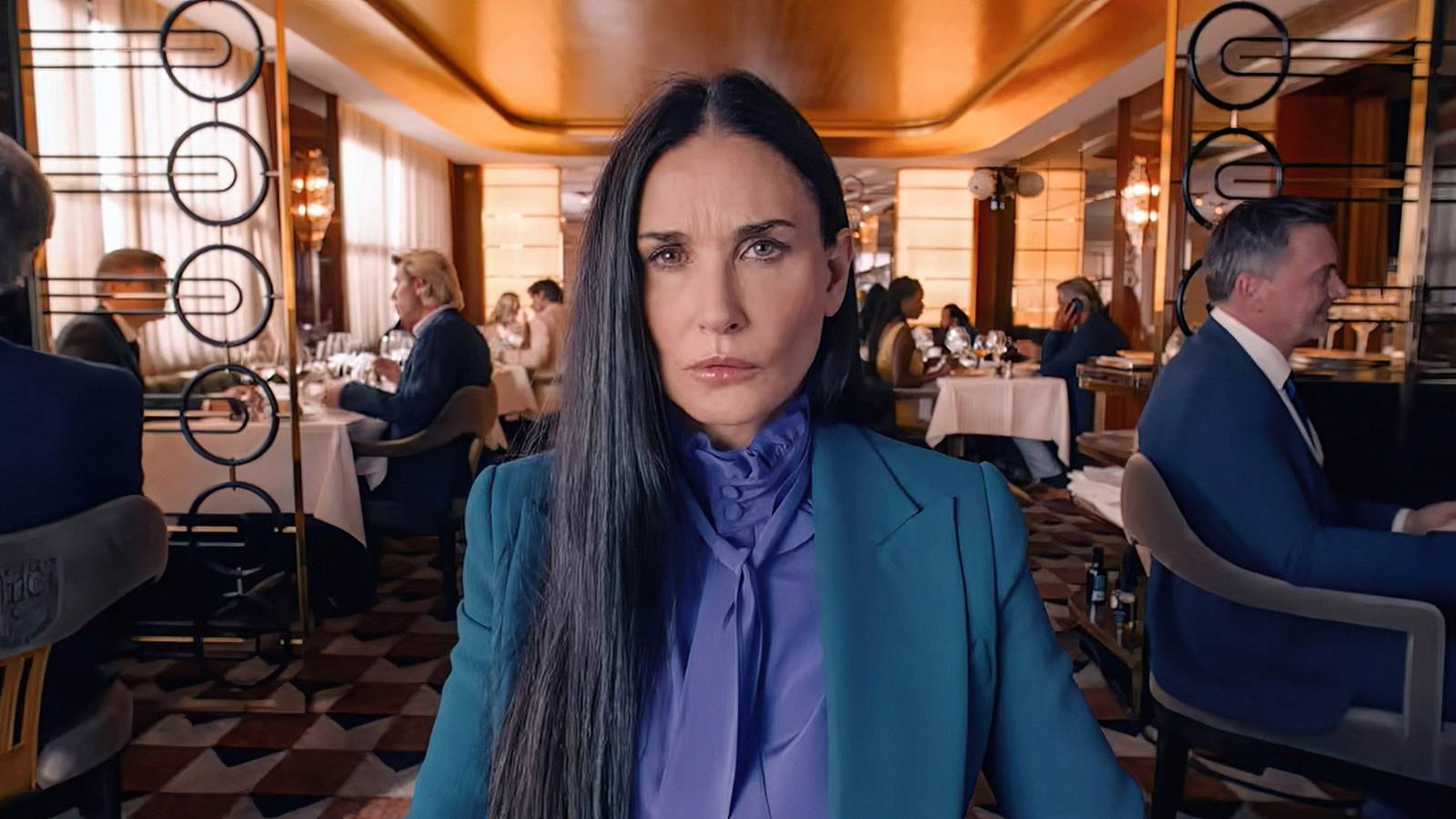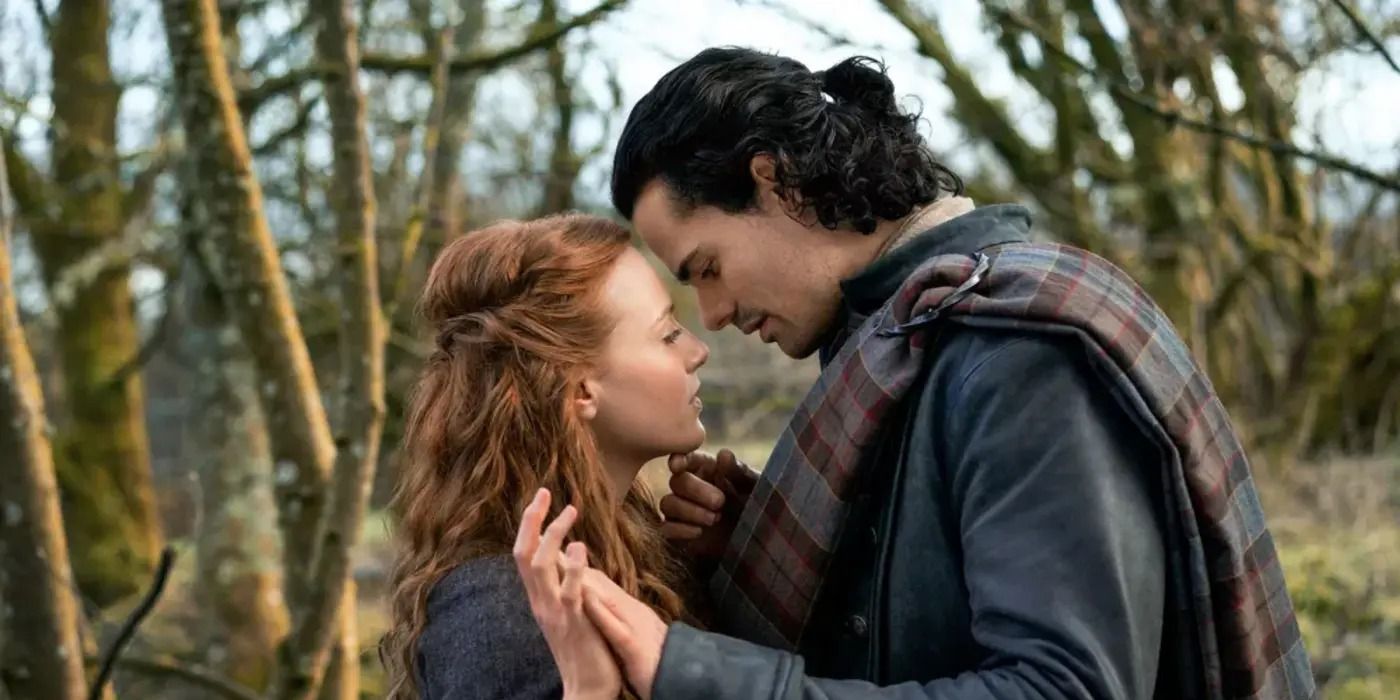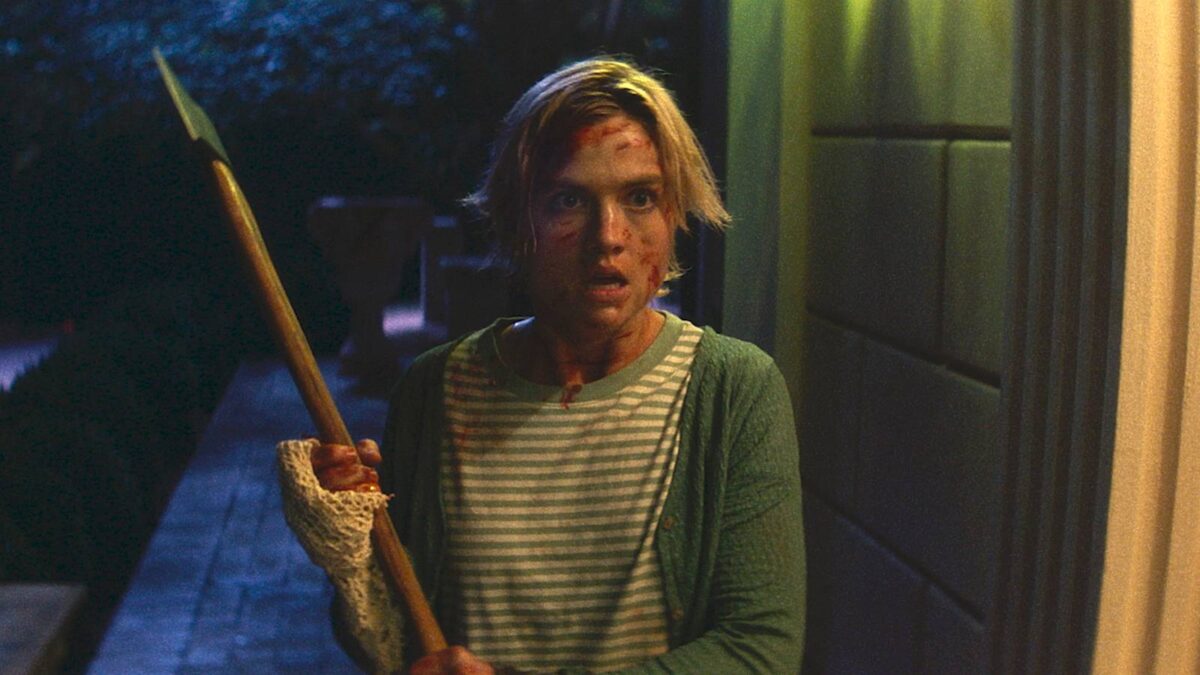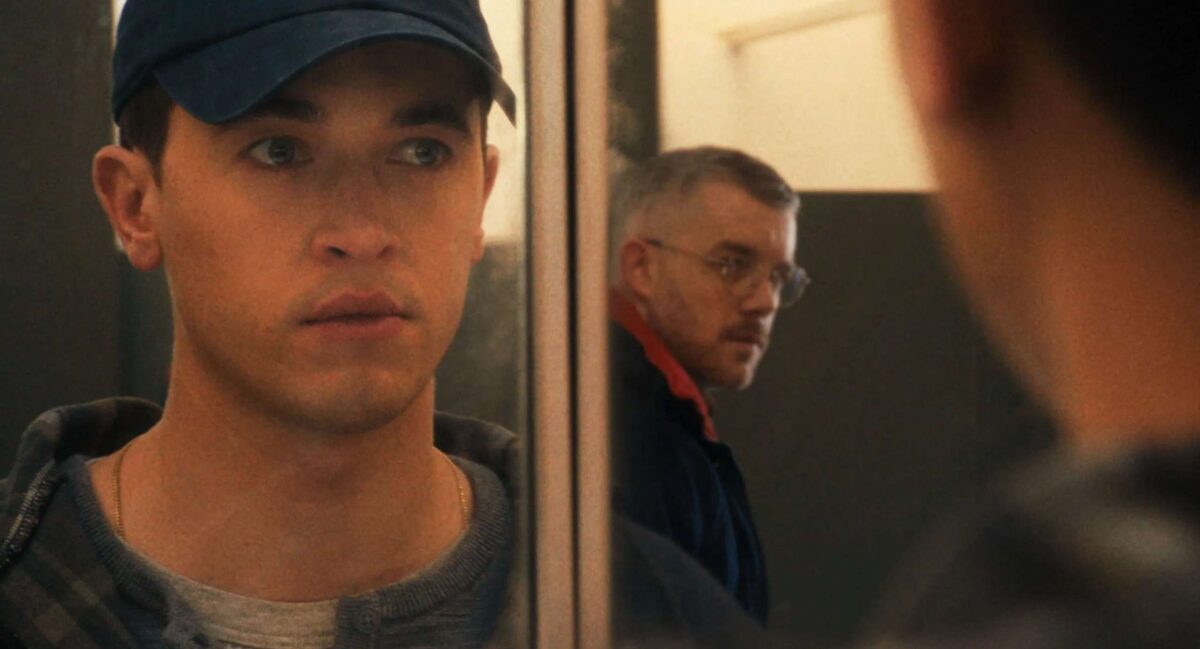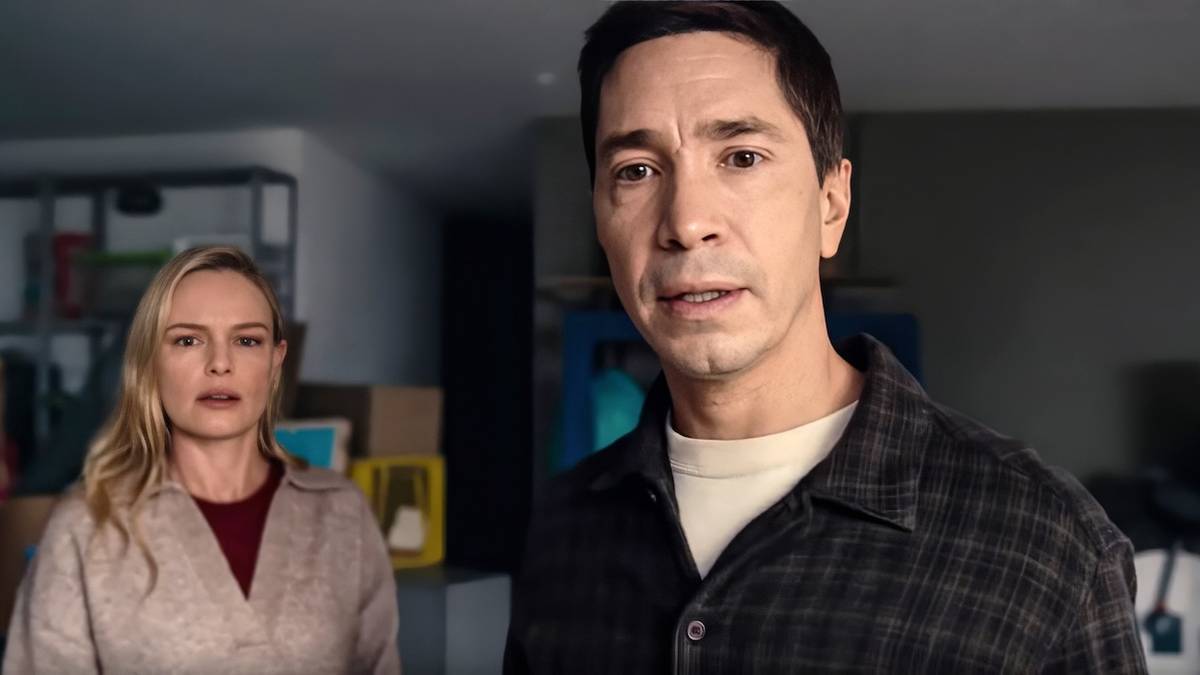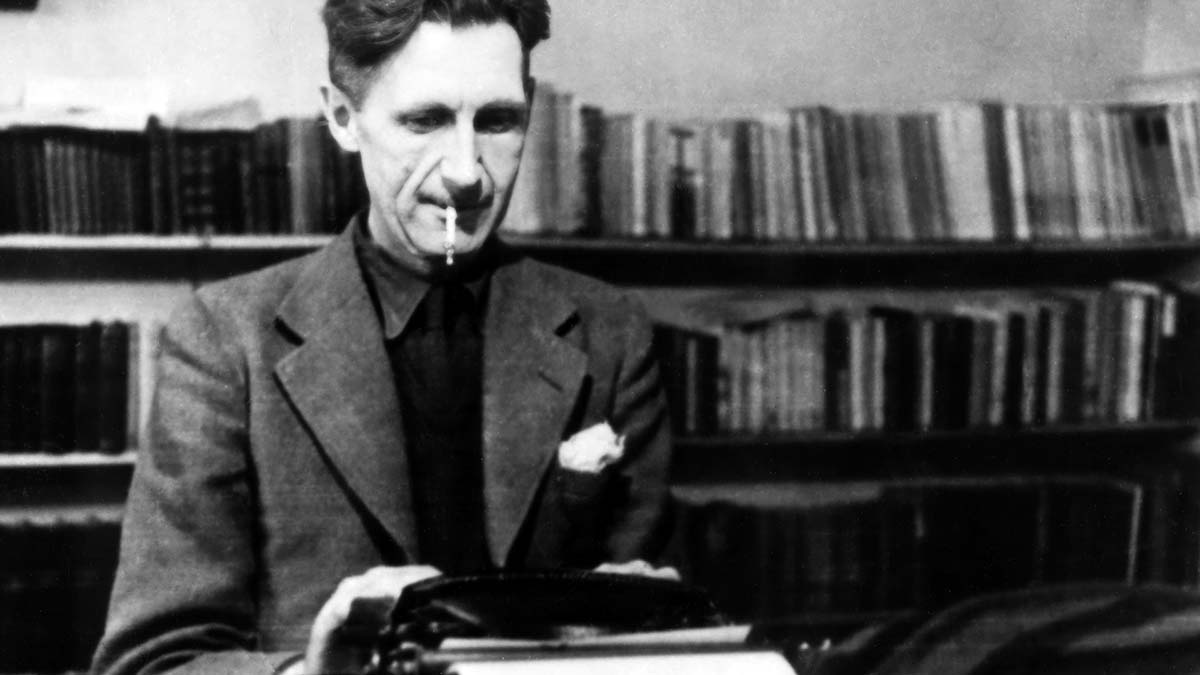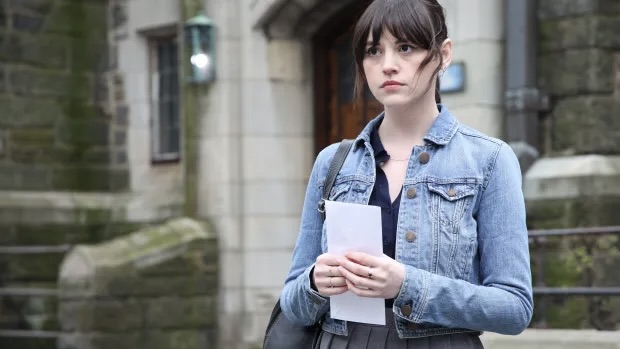
“I Kind of Think Like a Rock Band”: Hal Hartley on Self-Distribution, Personal Filmmaking and His New Feature, “Where to Land”
Sep 25, 2025
Where to Land
Hal Hartley’s Where to Land, his first feature in 11 years, presents a familiar, potent lattice of miscommunication within a small community. Joe Fulton (Bill Sage), a filmmaker referred to as “the quiet and unassuming elder statesman of American romantic comedies,” decides to prepare his last will and testament while also jockeying for a job as a cemetery groundskeeper. The timing of his estate planning combined with the drastic professional pivot concerns some of the people in Joe’s life, most of whom assume that he’s near death. His actress girlfriend Muriel (Kim Taff) and niece Veronica (Katelyn Sparks) panic about his turn towards the pensive; conversely, his lawyer (Gia Crovatin) and ex-wife (Edie Falco) remain coolheaded. His next-door neighbor (King Mustafa Obafemi) contemplates mortality and his good friend (George Feaster) vies for possession of his Gibson Les Paul. Meanwhile, a young writer-producer team plans to confront Joe with a possible paternity suit, mostly as a tactic to get a script into Muriel’s hands.
Much like his first feature The Unbelievable Truth, Where to Land ends with an extended sequence in a single space where the entire cast gathers to clear up misunderstandings and chart a new path forward. But unlike the screwball pace of Hartley’s early ’90s work, Where to Land adopts a slower tempo reflective of his characters’ wistful attitudes: they speak deliberately and sensibly about Proudhonist philosophy, new developments in light beer, and the direction of their respective lives. As the world succumbs to climate change and fascism, Joe and his friends weigh the possibility of major changes, knowing that time might be running out for new experiences.
Hartley is no stranger to change. Not only did he adapt to the rise of digital cameras and streaming video, but he embraced full rights ownership and self-distribution as a means of sidestepping an increasingly homogenized independent film ecosystem. Hartley’s artistic sensibility was fully formed since the beginning of his career, but the ways in which he has adjusted his worldview to changing technologies and a dire sociopolitical climate renders any new work a major event.
I spoke with Hartley not long after Where to Land premiered at New York’s Roxy Cinema about the film’s origins, casting younger actors opposite longtime collaborators, balancing despair and hope, and what the future holds. Where to Land is currently screening around the country. Find screening details at Hartley’s website.
Filmmaker: How did the Roxy screenings go?
Hal Hartley: Excellent. There were five of them, they were all sold out. Nearly sold out. So it was very good.
Filmmaker: I want to talk about the origins of Where to Land very quickly. There was a successful Kickstarter campaign to fund the film in 2019, correct?
Hartley: That’s right. Just as we were starting production—the day we actually started pre-production—the city got locked down for the pandemic, so we put everything on hold.
Filmmaker: Did the film change shape between then and now?
Hartley: The casting changed, the script did not. There were some people who I cast who were non-professional actors but were fascinating people, like the young men, Mick and Keith. I had done a totally different kind of casting choice there. But those people were not available by the time we got it up again.
Filmmaker: Were you estate planning when you were writing the script?
Hartley: I was. Around 2014, 2015, I had to do that. That scene with [Joe’s] lawyer was almost verbatim what my lawyers told me, and I thought it was funny. I remember coming back uptown on the subway thinking, “You can make a good story out of that.” Just a guy having to make a list of all his possessions and assign value to them and then decide who they go to when he’s dead. That’s great farce right there.
Filmmaker: When you began writing, did you start with the estate planning or a man finding work in the graveyard?
Hartley: A guy having to make his will was the origin. But both scenes were actually inspired by smaller bits in a novella that I started writing in early 2012 or 2013. I did a lot of work on it and then set it aside to make Ned Rifle, which took up a couple of years of my life. I got back to it around 2015, and I said, “This scene with the lawyer would make a good [film] scene.” So I wrote that out as dialogue and I had a great time with that. In fact, the existing scene in the movie is very similar to the sequence in the novella.
The thing about the groundskeeping at the cemetery, that was different. In the novel, that’s simply a one, one-and-a-half page inner monologue the main character has while he looks at this man working in the cemetery, admiring the simplicity and dignity of his job, as he’s on his way to the subway to go to another meeting in work that he doesn’t like anymore. Eventually, I wrote that out as dialogue.
Filmmaker: Did you ever finish the novella?
Hartley: It is finished. It’s in the proofreading stage right now, so we’re thinking that’s going to be released in January.
Filmmaker: Was the script written in 2018?
Hartley: It took a while. I think I started in 2015 and I didn’t really finish it until 2018. A first draft of it came together very quickly, but then I let it sit. I didn’t have any strong desire to make it right away; I wasn’t in a rush to make another film. I think around 2017, I really sat down and wrote for a month very closely with a lot of revision, and then started handing it around to friends, who liked it and encouraged me to move ahead.
Filmmaker: Where to Land is filled with many actors you’ve worked with many times in the past, like Robert John Burke and Edie Falco. But I’m wondering how you found, and made space for, the new, younger collaborators?
Hartley: Well, one thing I did is have the older collaborators be part of the casting process. Bill [Sage], for the most part. This time through, as opposed to the 2019 effort, everyone is a professional, or aiming to be professional. One of the high points for me in 2019 was casting Katelyn Sparks, who was up against four other young women to play Joe’s niece. There was some pretty stiff competition and it went on for a long time. I was really excited. I felt like I had discovered somebody special. I only cast her the day before the pandemic shut [everything] down.
Three years later, I had an event at my apartment when I started Elboro Press, my publishing company, and she came, [which] I hadn’t anticipated. I just invited everybody who’s on my regular list. But it inspired me again, just talking to her. Her intelligence, her grace, her looks, everything, I said, “Wow! I’d like to make a movie with her.” She was still very excited [about the film], and was also starting a career. She really liked the script and spoke very smartly about it. When she left, I remember Bill, Gia Crovatin, and some other friends telling me, “She is amazing. She would be great in a Hal Hartley film.”
Other people came in different ways. Kim Taff responded to an ad I placed in Backstage. Jay Lenox, who plays Keith, he’s the only one who’s not pursuing an acting career. He’s more in music and spoken-word performances. But he had an interesting energy. When he allows himself to speak, it becomes pretty exciting. I made sure that he and Jeremy Hendrik, who plays Mick and has more of an acting resume, could rehearse together. Jay is so young and new to it, he didn’t even realize that he needed to read the script. He only memorized his lines. But [things] like that can be kind of interesting and bring different colors to a performance or scene.
Filmmaker: Were the new performers aware of your previous work?
Hartley: No. Like, Kim had no idea about my films until she was already cast.
Filmmaker: That’s gotta be exciting.
Hartley: They come with no preconceptions. I’ve had problems in the past with people who know my films and have read reviews about them, so they come to the work with an attitude that they’ve gleaned from the reviews, [and] they’re often totally wrong. They could be talented and hardworking people, but first I have to get this junk out of their perception of the work. Kim was a special [case]. She tends to be more of a large comedic presence, but she’s very good with language. [She really got] a lot of that hilarious, dramatic language under her tongue.
Filmmaker: When you were first writing the script, were you writing with the locations in mind?
Hartley: When I wrote the script back in 2015 through 2018, it was very specific. The whole idea was to shoot it in a five-block radius of my apartment in Washington Heights. The cemetery was right across the street from where I lived; I thought about a couple of restaurants I knew up there. But the pandemic happened and I sold that apartment to move further downtown to the Lincoln Center area, so we did it here.
Filmmaker: So, Joe’s apartment is your current apartment?
Hartley: Yeah.
Filmmaker: Did you steal the train shots?
Hartley: Yeah. [Laughs.] That’s how you do train shots in New York.
Filmmaker: You reunited with cinematographer Sarah Cawley for this film after previously working with her on The Girl from Monday and Fay Grim. What were the conversations you two had about how the film should look? Were there specific influences that you were drawing upon?
Hartley: Most of the idea for how to shoot this film came from my previous work in the past decade or so: the Possible Films 2 collection, the five short films I made on standard definition video in Germany around 2007 through 2009; Meanwhile, which was shot here in New York in 2012; and even Ned Rifle. I mean, Ned Rifle is a different type of story, it’s a road movie in a sense, it’s many locations, [people] traveling in public spaces. But there was this thing of locked-off shots almost all the time. In Ned Rifle, Meanwhile, and [Where to Land], we do operate a bit—tilt, pan—but it’s mostly about a very determined way of looking at part of the action, not all of the action. In the apartment scenes, there are people often talking off-camera. They’re out of frame, moving through the frame, that kind of thing. That was a big part of it, taking advantage of the lightness and smallness of the equipment these days, like cameras and lights.
Filmmaker: I was gonna ask if the use of locked-off shots was an early aesthetic choice or a decision downwind of scheduling and resources.
Hartley: No, it’s purposeful. I would have done that even if I had greater resources or more money. I just like that determined way of looking. The only thing that would have really been different is if I had a Peewee dolly. That’s a budget thing. That would’ve meant the movie needed to be about twice the cost, and I didn’t think I could manage that money the way I wanted to.
Filmmaker: How long was the shoot?
Hartley: 14 days.
Filmmaker: I was doing research on some of the film’s references and I’m curious when the Cat Stevens song “Silent Sunlight,” the lullaby that Joe sang to Veronica when she was young, entered the film?
Hartley: That was a song I listened to a lot as a teenager. Then I heard it [again] in my mid-40s at a time that was kind of stressful—business wise, artistically, personally. Lots of big decisions had to be made and it really moved me. It spoke to me in a totally different way about bearing up under pressure and being resigned to the way the world moves but trying to keep a good attitude. Like any good song, any good lyric, it can be interpreted in various ways, but that’s how I felt about it.
Then it came back to me while I was writing [Where to Land]. I listened to it again and said, “That would be the perfect sentiment at the end of this.” It’s kind of sad but sweet, and it’s sort of Joe’s real renewal. At the beginning of the film he thinks, “I’d like to change. I’d like to see if I could change. I don’t have to be a director of romantic comedies forever.” Then at the end, he’s back to the same old job because the people who love him want him to do that and he’d like to help them out. So it’s double edged when he says at the end, “And begin again…” It’s a little bit of resignation, but he’s not gonna complain about it because, you know, he’ll have some fun. Besides, he seems to have been given the job at the cemetery, too.
Filmmaker: Your films have always filtered your thoughts on culture, politics, and capitalism, but the way that it’s addressed in Where to Land feels startlingly direct. I’m thinking of the extended scene between Bill Sage and Kathleen Chalfant, who plays the philosopher, Elizabeth, where they openly discuss balancing their despair with a beleaguered optimism. Did you feel compelled to use this film to talk about what’s going on?
Hartley: Yeah, I think I do. That scene was the center of the film for me, and I’ve been working on version of it one way or another for about 20 years. I mean, it’s something you just said about the despair on the one hand and the hopefulness on the other. That’s the truth of the matter, you know? No matter how informed we are, no matter how stringent we are to make sure that we’re not bullshitting ourselves about facts, we’re still hopeful. We optimistically want things to work out, and work out the right way. And therein lies the rub. That’s where the pain and suffering comes from because these two things exist in us at the same time. Maybe it’s not despair, but it’s facing up to the facts. The other side of you wants to invent ways to get past the facts or fix the facts, and it seems to me to be the only thing that’s worth talking about.
Filmmaker: There’s that bit when Joe asks Elisabeth how to explain their heady conversation to his 20-year-old niece.
Hartley: And be understood.
Filmmaker: Right. And then Elisabeth asks if he still worries about being understood. Do you have nieces and nephews?
Hartley: I do. And great-nieces and nephews, too.
Filmmaker: I found that small moment to be quite chilling, and maybe it’s because it’s difficult for me to talk to people like my parents, or really anyone from a certain generation, about the current climate because there’s always a fundamental disconnect at play. On one side, there are people who are on their way out, and on the other, there are much younger people who will have to deal with all of these problems for the foreseeable future.
Hartley: That scene stopped everybody. Sarah Cawley has children who are in their mid- to upper-twenties. My mixer has a little girl who’s four; I remember he stopped in the middle of mixing that scene to say, “This is a real issue with me. I think about it all the time. I thought about it before she was born. Should I be doing this? Am I just being selfish?” Kyle Gilman, our editor, has a son who’s nine. He read the script and said, “That really gets to something that’s unavoidable now for any parent who’s thinking.” I’m sure there are parents who just don’t think about this stuff at all—I see them all the time on the streets—who think the world’s just going to be great and they’ll be rich forever.
Filmmaker: You never explicitly specified Joe’s relationship to Elizabeth in the film, right?
Hartley: No. She just seems like she’s an old friend. Kathleen and Bill and I imagined a backstory for them, how there’s this philosopher who apparently taught at Columbia University who knows a director of romantic comedies who’s like half her age, and they made something up.
Filmmaker: Have you seen Familiar Touch?
Hartley: No, I haven’t.
Filmmaker: Kathleen is pretty excellent in it.
Hartley: She’s a remarkable actress.
Filmmaker: The last time we spoke, I seem to recall you expressing resistance to infusing autobiography into your work. But with Where to Land, it’s difficult to ignore the parallels between Joe’s career and your, references to your own work, etc. Did you make the choice to embrace the vulnerability of that expression?
Hartley: At a certain point, I thought to myself, “I’m not that different from other people.” So if I’m 58 years old and [asking myself], “Can I make a change in my life professionally?” I’m sure it’s happening to other people too. I tried to allow personal experience to inspire a scene or an idea, but then make sure in my writing that it’s not too personal, like it can only be understood if you know Hal Hartley or his films. I thought that would be kind of indulgent. So most of it was definitely inspired by reflecting upon things that happened to me in my life, but then I tried to make them appropriately general so that they can speak to other people.
Filmmaker: Have you considered, or already made, a radical professional change?
Hartley: That’s funny. I think in retrospect, I may have, but it didn’t feel like I was deciding to do it all at once. The way I make films now, and the way I finance and produce them, is really quite different and great. It has a lot to do with technology. Raising the money through crowdsourcing and self-distributing, it’s sort of what I was desperate for in the latter half of the ’90s. I was just getting really tired of working with distributors and sales agents and the whole pecking order of the thing. So I had a lots of hopes for this thing that everyone kept talking about: the coming of 2.5K HD. When it finally was there, it’s like, “This is good. I can own all the means of production,” and I could self-distribute. Well, that took a while, for the internet to become such a thing where we could stream. [We couldn’t anticipate] that there would be just another corporate level to deal with, that these streaming platforms would become like studios. But the technology was there anyway. For a film like this, we’ll do the movie thing and we’ll have the Blu-rays, and it’ll be streaming on HalHartley.com. That’s what I was thinking about when I made The Girl from Monday in 2004. That was the original plan, but the internet wasn’t fast enough.
Filmmaker: With self-distribution, are you concerned or indifferent about potentially reaching people who may not already know your work, or are you content with the audience you have?
Hartley: You always wanna reach out further, but the best way to do that is to start with the base. I am concerned with having the right kind of audience. I don’t see the point in working overtime to get people who you know, or have a very good suspicion, are not going to like this kind of work. I kind of think like a rock band. “We know our audience. We’re going to that town and we’re gonna play that venue. We’re not gonna play at the stadium. We’re gonna play at that club.” Plus, word gets around and people talk. I mean, the last couple of weeks have been really terrific that way, the way the word is spreading [while] not necessarily submitting ourselves to the dictates of the major newspapers.
Filmmaker: I saw Richard Linklater’s name thanked in the credits. Was there a specific reason for that?
Hartley: He contributed to the Kickstarter. He’s on that tier where you’re on the thank-you list. He’s done that before. Other filmmakers have done that.
Filmmaker: Has making Where to Land reenergized you to make more films in the coming years?
Hartley: Well, it’s satisfying, but I don’t think I’d want to make another film this way, on this level of budget [$362,000]. It’s an energy thing. You get older, you just don’t have the physical energy. It’s very physically challenging to make a film like this, if I want to work at the level I know I can work at.
I’d like to get paid. That’s part of it. This will be great. I own it entirely myself, so it contributes to my income. It’s the significant part of my income. If I did make films with other people’s money, and [I had] the creative and business control that I insist on, I would never say no to that. For the most part, I think I’ll be writing.
Publisher: Source link
Erotic Horror Is Long On Innuendo, Short On Climax As It Fails To Deliver On A Promising Premise
Picture this: you splurge on a stunning estate on AirBnB for a romantic weekend with your long-time partner, only for another couple to show up having done the same, on a different app. With the hosts not responding to messages…
Oct 8, 2025
Desire, Duty, and Deception Collide
Carmen Emmi’s Plainclothes is an evocative, bruising romantic thriller that takes place in the shadowy underbelly of 1990s New York, where personal identity collides with institutional control. More than just a story about police work, the film is a taut…
Oct 8, 2025
Real-Life Couple Justin Long and Kate Bosworth Have Tons of Fun in a Creature Feature That Plays It Too Safe
In 2022, Justin Long and Kate Bosworth teamed up for the horror comedy House of Darkness. A year later, the actors got married and are now parents, so it's fun to see them working together again for another outing in…
Oct 6, 2025
Raoul Peck’s Everything Bagel Documentary Puts Too Much In the Author’s Mouth [TIFF]
Everyone has their own George Orwell and tends to think everyone else gets him wrong. As such, making a sprawling quasi-biographical documentary like “Orwell: 2+2=5” is a brave effort bound to exasperate people across the political spectrum. Even so, Raoul…
Oct 6, 2025
